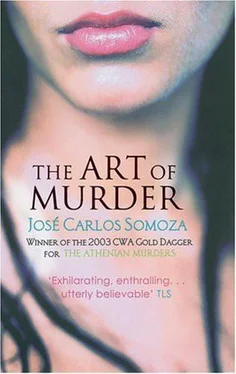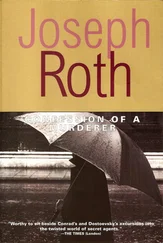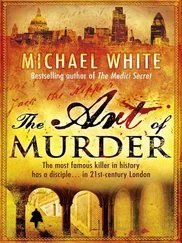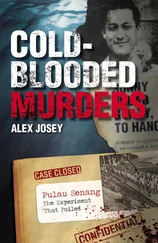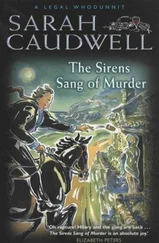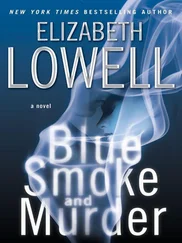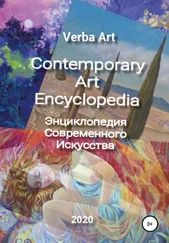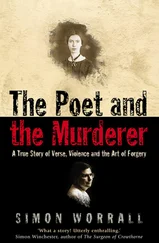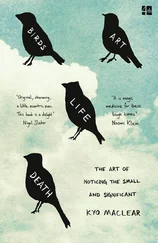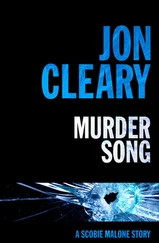Jose Somoza - Art of Murder
Здесь есть возможность читать онлайн «Jose Somoza - Art of Murder» весь текст электронной книги совершенно бесплатно (целиком полную версию без сокращений). В некоторых случаях можно слушать аудио, скачать через торрент в формате fb2 и присутствует краткое содержание. Жанр: Триллер, на английском языке. Описание произведения, (предисловие) а так же отзывы посетителей доступны на портале библиотеки ЛибКат.
- Название:Art of Murder
- Автор:
- Жанр:
- Год:неизвестен
- ISBN:нет данных
- Рейтинг книги:4 / 5. Голосов: 1
-
Избранное:Добавить в избранное
- Отзывы:
-
Ваша оценка:
- 80
- 1
- 2
- 3
- 4
- 5
Art of Murder: краткое содержание, описание и аннотация
Предлагаем к чтению аннотацию, описание, краткое содержание или предисловие (зависит от того, что написал сам автор книги «Art of Murder»). Если вы не нашли необходимую информацию о книге — напишите в комментариях, мы постараемся отыскать её.
Art of Murder — читать онлайн бесплатно полную книгу (весь текст) целиком
Ниже представлен текст книги, разбитый по страницам. Система сохранения места последней прочитанной страницы, позволяет с удобством читать онлайн бесплатно книгу «Art of Murder», без необходимости каждый раз заново искать на чём Вы остановились. Поставьте закладку, и сможете в любой момент перейти на страницу, на которой закончили чтение.
Интервал:
Закладка:
'This guy has all the police forces of Europe on his trail, Hirum. We're getting help from organisations and defence departments that only swing into action in very special cases, when the security or the cultural heritage of one of their member states is threatened. Globalisation has made the methods of a Sherlock Holmes seem very old-fashioned, I suppose, but I'm one of those who prefer old-fashioned methods. Besides, their reports end up with the crisis cabinet, and I'm convinced one of the members of that cabinet is the person who is helping our suspect. But worst of all, I have no time.' She paused, and then added: 'We suspect that he's going to try to destroy one of the paintings in the new exhibition, and that he's going to do it now, during the exhibition. Perhaps in a week or two, perhaps earlier. He might even attack on the day of the opening. I can't wait much longer. Today is Tuesday 11 July, Hirum. There are four days left. I am des-per-ate. My people are working on it day and night. We've devised some very complex protection plans, but this guy has a plan of his own, and he'll dodge us just as he has until now. He's going to destroy another painting. And I have to stop him.' Oslo thought for a minute. 'Tell me a bit about his modus operandi.'
Wood told him about the state the paintings had been found in, and the use of the canvas cutter. She added:
'He records the voices of the canvases saying weird things which we reckon he must force them to read. I've brought you written copies of both recordings.'
She pulled some sheets of paper out of her bag and passed them to him. By the time Oslo had finished reading them, the garden was dark and silent.
The art that survives is the art that has died,' he read aloud. 'That is odd. It sounds like a declaration of principles of hyperdramatic art. Tanagorsky always said that HD art would not survive because it's live art. It may sound like a paradox, but that's the way it is: it's made from real flesh-and-blood people, and so is ephemeral.'
Miss Wood had abandoned her notebook, and was leaning forward, elbows on the edge of the desk.
'Hirum, do you think that the recorded phrases reveal a deep artistic knowledge?' Oslo raised his eyebrows and thought before he responded.
'It's hard to say, but I think so. "Art is also destruction," it says further on. "Before it used to be just that." And it names cave artists, and the Egyptians. I see it this way: until the Renaissance, broadly speaking, artists worked for "destruction" or death: bison on cave walls, figures on tombs, statues of terrifying gods, medieval descriptions of hell… But from the Renaissance onwards, art began to work for life. And that went on until the Second World War, believe it or not. After that conflict, there was a shrinking of awareness. Painters lost their virginity, became pessimistic, no longer believed in their own craft. Even today, well into the twenty-first century, we're still suffering the consequences. All of us are the inheritors of that dreadful war. This is our Nazi inheritance, April. This is what the Nazis have achieved…'
Oslo's voice had diminished to almost a whisper. It was as dark as the nightfall closing in around them. He was speaking without looking at Miss Wood, staring instead at his desk.
'We've always thought humanity was a mammal which could lick its own wounds. But in fact we're as fragile as a huge painting, a beautiful but terrifying mural painting which has been creating itself over the centuries. That's what makes us so fragile: slashes on the canvas of humanity are hard to repair. And the Nazis slashed the canvas to ribbons. Our convictions were smashed, and their fragments scattered throughout history.
There was nothing we could do with beauty, except to grieve over it. There was no way we could get back to Leonardo, Raphael, Velazquez, or Renoir. Humanity became a mutilated survivor whose eyes are wide open to horror. And that's the Nazis' real victory. Artists still suffer from that inheritance, April. In that sense, in only that sense, it's true to say that Hitler won the war forever.'
He raised his sad eyes to look at Miss Wood, who sat listening to him silently.
'Just like in the university, I'm talking too much,' he said with a smile. 'No, go on, please.'
Oslo stared down at the elaborate knob of his cane while he went on.
'Art has always been very sensitive to the currents of history. After the war, painting fell apart; canvases became daubs of bright colours, a sort of crazy revolution of amorphous shapes. Art movements and tendencies lasted less and less time. One painter even said, quite rightly, that the avantgardes existed simply to provide material for the following day's tradition. There were action paintings, live art, performances, pop art and art that defied classification. Schools were born and died in a day. Each painter became his own school, and the only acceptable Rile was that there were no rules. Then hyperdramatism came on the scene: and that in many ways is closer to destruction than any other artistic movement.' 'How's that?' Miss Wood asked.
'According to Kalima, the great theorist of HD art, humanity is not only contrary to art, it cancels it out. That's what he says in his books, I'm not inventing it. To put it simply: an HD work is more artistic the less human it is. That is what hyperdramatic exercises are aimed at: stripping the model of their condition as a person, getting rid of their convictions, their emotional stability, their willpower, undermining their dignity in order to transform them into a thing they can make art out of. "We have to destroy the human being in order to create the work," say the hyperdramatists. That's what the art of our time has become, April. That is the art of our world, of this new century of ours. And not only have they dispensed with human beings: they've also dispensed with all the other arts. We live in a hyperdramatic world.'
Oslo paused. Miss Wood could not help thinking yet again of the Debbie Richards portrait. That woman who was more attractive than she was, whom Hirum had on show in his house to remember her.
'As is usually the case,' Oslo went on, 'this savage tendency has given rise to opposite reactions. On the one hand, people who believe you have to go to the absolute extreme and degrade the human being to an unbelievable extent: that was how art-shocks, hypertragedies, animarts and so on were born, and human artefacts… and the corollary, the ultimate degradation of stained art… But on the other, there are those who believe you can create works of art with human beings without having to degrade or humiliate them. And that's how natural-humanism came about.' He raised his hands in the air, and smiled. 'But I'm not trying to convert you.'
'You mean,' Miss Wood said, 'that whoever wrote those texts was thinking in hyperdramatic terms?'
'Yes, but there are strange phrases. For example, the one at the end of both texts: "If the figures die, the works persist." I can't see how an HD work can persist if its figures die. That's taking Tanagorsky's paradox to the extreme. They are confused texts, and I'd like more time to be able to analyse them at greater leisure. At any rate, I don't think we should take them literally. I remember that in Alice, Humpty Dumpty reckoned he could make words mean whatever he wanted. Something similar is going on here. Only the person who wrote them can tell us what he meant.'
'Hirum,' Miss Wood said after another short pause, 'I've read that Deflowering and Monsters were considered very special in Van Tysch's output. Why is that?'
'It's true, they are very different from the rest of his production. In his Treatise on Hyperdramatic Art, Van Tysch says that Deflowering is based on a vision he had as a child, when he was going to Edenburg castle with his father. Maurits wanted Bruno to observe him at work so that he could learn the skills of the trade. Bruno used to go with him every summer in his school holidays, and they would walk together along a path bordered with flowers. In one part, there was a bank of wild narcissi, and one day Van Tysch thought he saw a young girl standing among the flowers. He might really have seen her, but he thinks it must have been a dream. The fact is that Deflowering became for him a symbol of his childhood. The smell of wet wood that the work gives off… that the work gave off… is a reference to the summer storm that broke over Edenburg on the day he saw the vision.' Oslo twisted his lips. ‘I met Annek when Van Tysch was painting that work with her. The poor child thought he cared for her. And he used her feelings in his work.'
Читать дальшеИнтервал:
Закладка:
Похожие книги на «Art of Murder»
Представляем Вашему вниманию похожие книги на «Art of Murder» списком для выбора. Мы отобрали схожую по названию и смыслу литературу в надежде предоставить читателям больше вариантов отыскать новые, интересные, ещё непрочитанные произведения.
Обсуждение, отзывы о книге «Art of Murder» и просто собственные мнения читателей. Оставьте ваши комментарии, напишите, что Вы думаете о произведении, его смысле или главных героях. Укажите что конкретно понравилось, а что нет, и почему Вы так считаете.
